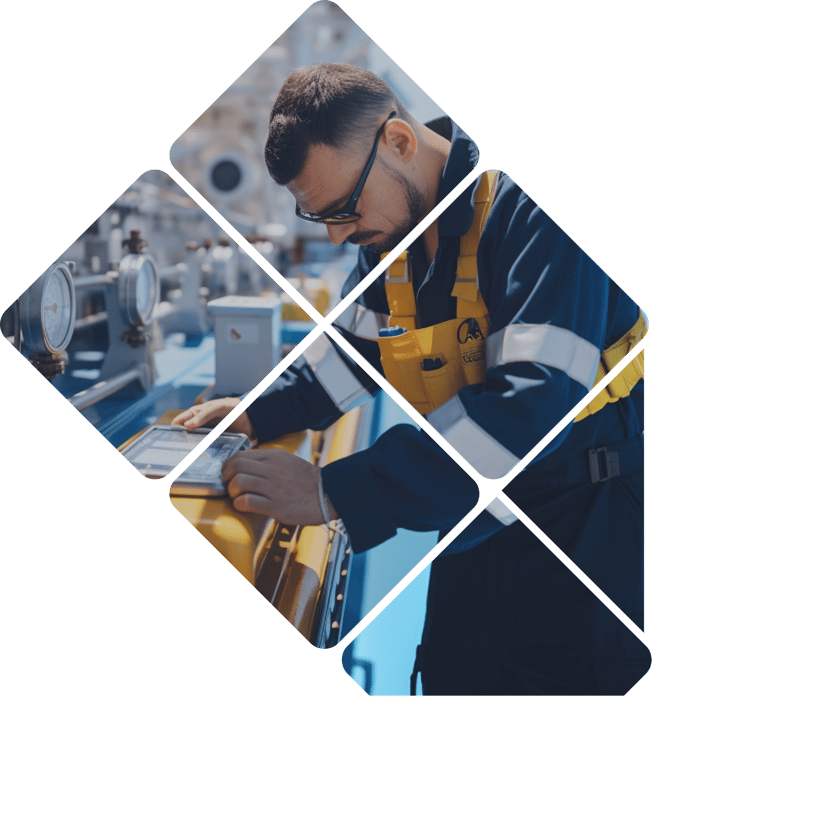The MED-compliant GX-9000 is finally here
The maritime industry is embracing a new standard in safety with the GX-9000 portable...

Scrubbers can be a cost-effective choice to achieve emission compliance. As long as they operate as planned, that is.
In the ever-evolving landscape of maritime regulations and environmental consciousness, shipowners and operators face the challenge of meeting emission standards while optimizing operational efficiency. Implemented with MARPOL Annex VI, the global IMO 2020 regulation aims to reduce sulfur (SOx) and carbon dioxide (CO2) emissions throughout the maritime industry.
One solution that has gained prominence to achieve compliance is using an Exhaust Gas Cleaning System (EGCS), commonly known as a “scrubber.” This article sheds light on the intricacies of scrubber wash water, exploring topics from alkalinity and performance to pollution concerns and the importance of indicative testing.
Reducing sulfur from the fuel can be costly, making scrubbers a cost-effective and efficient means of compliance while maintaining operational efficiency for vessels operating on older, high-sulfur-based fuel types.
Two main classes of scrubbers use water to cleanse the exhaust gas: open-loop scrubbers and closed-loop scrubbers. These scrubbers wash exhaust by spraying water through the gas stream.
Open-loop scrubbers use seawater with a relatively high natural alkalinity level to wash the exhaust. These scrubbers are cost-efficient as they require less use of chemicals and waste management. The downside, however, is that the wash water is discharged directly back into the oceans, which has already caught the attention of several authorities. New regulations may come sooner rather than later.
On the other hand, closed-loop scrubbers use fresh water with chemically added alkalinity to wash the exhaust. Cleansing the waste wash water requires additional filtering, cooling, and treatment before discharging. In addition to the cost of chemicals, sludge management serves as an additional expense.
You can also find hybrid scrubbers combining the two technologies and dry scrubbers that cleanse the exhaust with dry chemicals.
Despite the advantages of scrubbers, there are concerns regarding the potential pollution of wash water. Scrubbers effectively reduce Sulphur Oxides (SOx) and Particulate Matter (PM) emitted from main engines and boilers aboard ships. But these are not the only parameters that the IMO considers.
IMO requires constant monitoring of wash water pressure and flow rate, exhaust gas pressure, the scrubber engine, and boiler loads. In addition, exhaust gas SO2 (ppm) and CO2 (%) must comply with current emission ratio standards:
|
Fuel oil sulfur content (%m/m) |
Emission ratio SO2/CO2 (%v/v) |
|
3,5 |
151,7 |
|
0,5 |
21,7 |
|
0,1 |
4,3 |
To reduce fuel levels of 3,5% sulfur to 0,1%, one requires water with alkalinity levels of 2300 µmol/l. For reference, the Mediterranean Sea is considered to have a high alkalinity concentration of approximately 2600 µmol/l, while the northern rivers of the Baltic Sea can be as low as 800 µmol/l.
IMO has also set limits on pH, PAH (polycyclic aromatic hydrocarbons), turbidity, nitrates, and nitrites (NOX removal). To achieve compliance, one must display monitoring of exhaust and wash water discharges, and the data must be retained for 18 months.
However, monitoring and managing the performance will not guarantee that the system operates as it should. This is where indicative testing plays an important role.
The effectiveness of scrubbers hinges on precise calibration, especially concerning inlet sensors and pollution. Indicative testing of wash water can be an effortless measure of maintaining the high-performance standards of your scrubber systems over time.
Regular and precise testing allows for easy detection of subtle deviations in wash water composition or system parameters, enabling proactive adjustments to ensure optimal scrubber efficiency.
Indicative testing serves as a proactive measure by continuously monitoring and analyzing crucial elements such as pH levels, pollutant concentrations, and system functionality, allowing for immediate corrective actions and preventive maintenance. This proactive approach not only sustains compliance with regulations but also preserves the long-term effectiveness of your scrubbers.
Note: Another important aspect of performing indicative testing for scrubber systems is the potential hazard of scrubber gas. Scrubber maintenance and testing activities involve enclosed space entries and should be treated accordingly. At Bruusgaard, we urge you to exercise caution and use high-quality gas detection for crew safety.

Post by Martin Bruusgaard
Similar subjects
Never miss out on industry news, reviews and articles.
The maritime industry is embracing a new standard in safety with the GX-9000 portable...
We are pleased to announce the integration of Crowcon’s T4 personal gas detector unit...
Scrubbers can be a cost-effective choice to achieve emission compliance. As long as they...
Optimal safety. Minimal effort.

Providing solutions for





